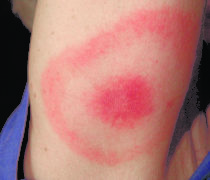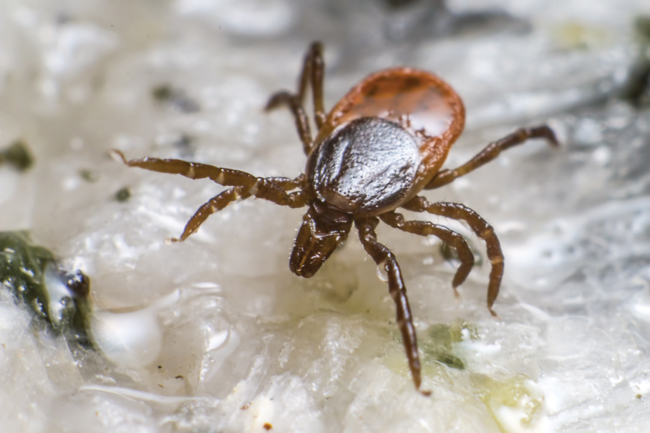BY JANET MANDELSTAM
It’s spring, and that means it’s time to check for ticks whenever you’ve been out in woods or grassy areas. The tiny deer ticks — “about the size of a sesame seed,” says Bloomington pediatrician Scot Moore — can carry Lyme disease, which, if untreated, may infect joints, the heart, and the nervous system.
Although Lyme disease is not common in the greater Bloomington area, Moore says the number of cases is increasing every year, especially among children who are likely to spend more time outdoors.
The ticks are most active in spring and early summer, but there are steps you can take to avoid them. Staying out of tick habitat is the most obvious, but if that’s not an option, Moore advises wearing protective clothing: light colors so you can see the ticks more easily, long sleeves, and long pants tucked into socks. “That may not be comfortable in summer,” he says, so the most important thing to do when you return from an outing in nature is “check for ticks from head to toe and everything in between. If you find one, grasp it with a tweezers as close to the skin as possible and pull it off. Then wash the area with soap and water.”

Only 3 percent of deer ticks in Indiana carry the Lyme disease bacteria, he says, “and the tick needs to be attached for two days to transmit the illness.” If you find a tick, watch for symptoms of Lyme disease which, Moore says, “are flu-like — headache, chills, and fever.” Some 80-90 percent of people with the disease will develop a distinctive bull’s-eye rash usually one to two weeks after the bite. He urges anyone with the rash to see a doctor.
The standard treatment for Lyme disease is a 10- to 12-day course of antibiotics. “Doxycycline is the antibiotic of choice for anyone 8 years and older,” says Moore, a member of Riley Physicians at IU Health. “Almost everyone will recover if they follow the course of antibiotics correctly.”
Not only humans contract Lyme disease; the ticks bite domestic animals as well. “Watch for signs of lameness in your pets,” Moore says, “and if you see it, take them to the vet.”












